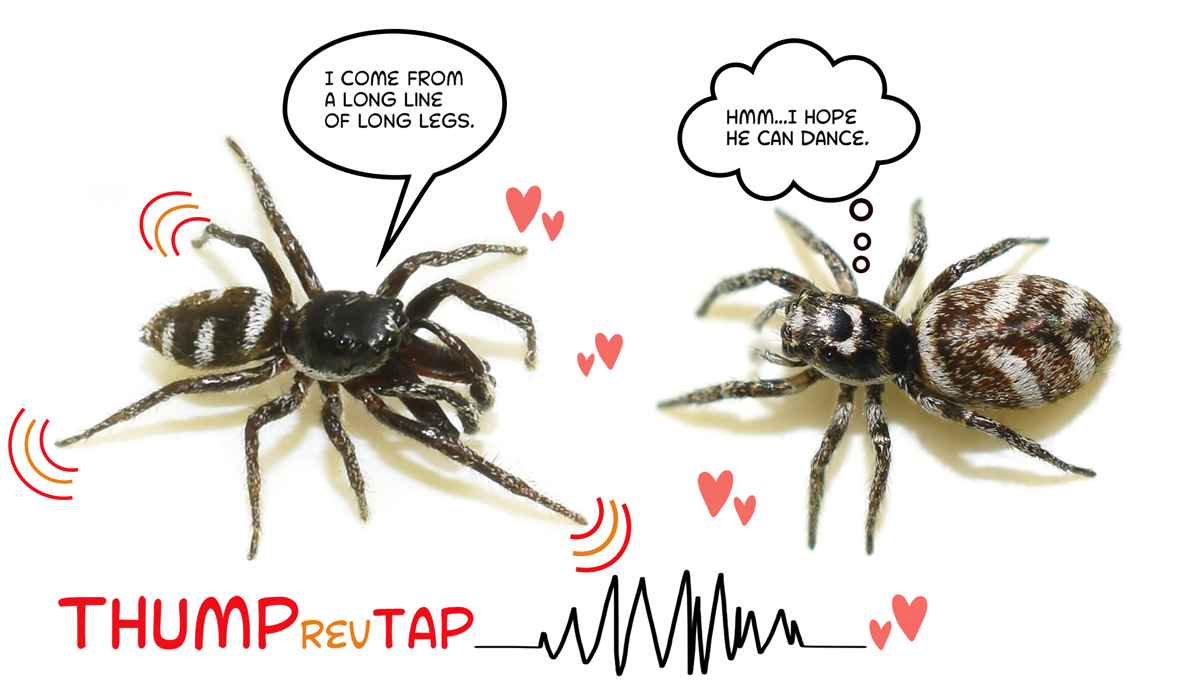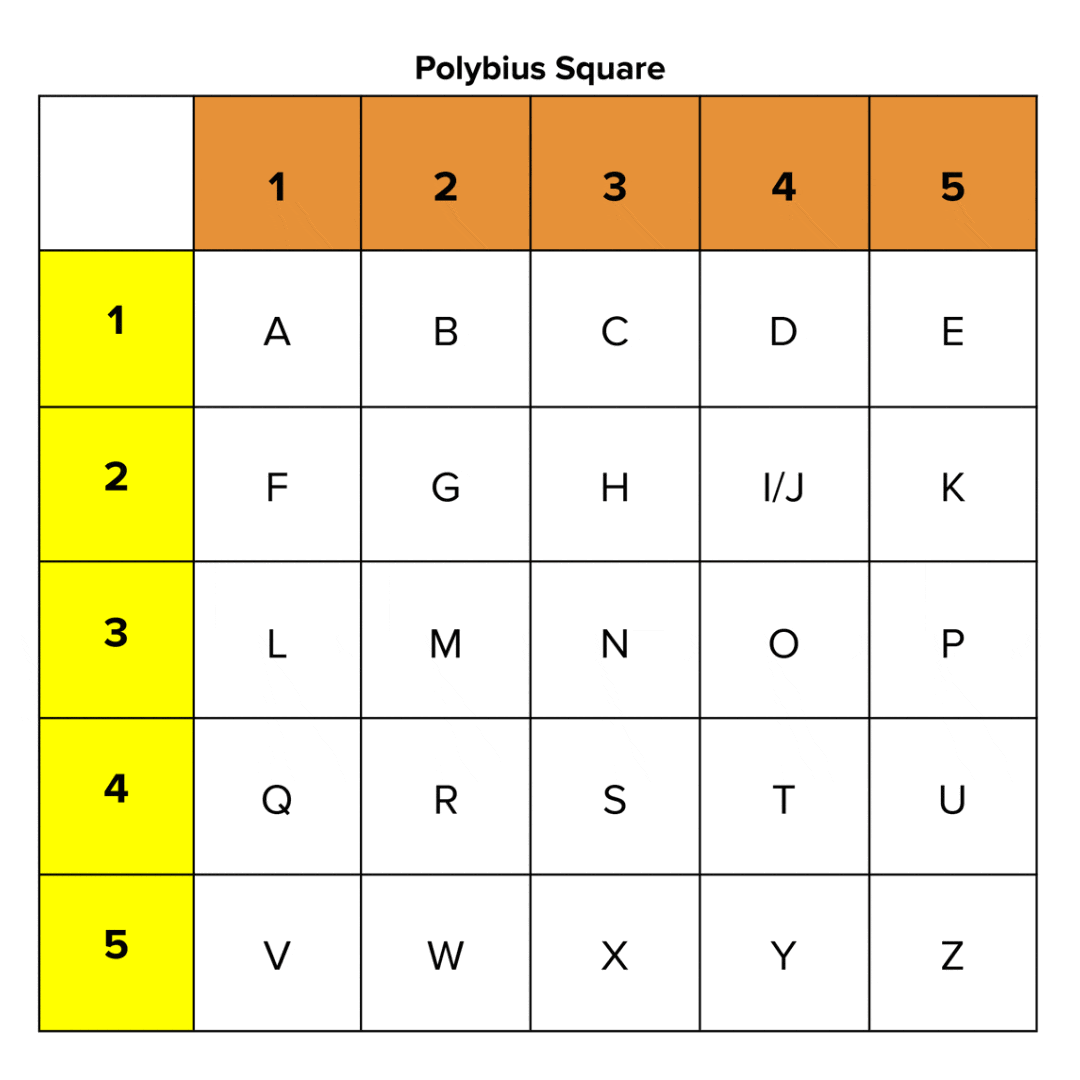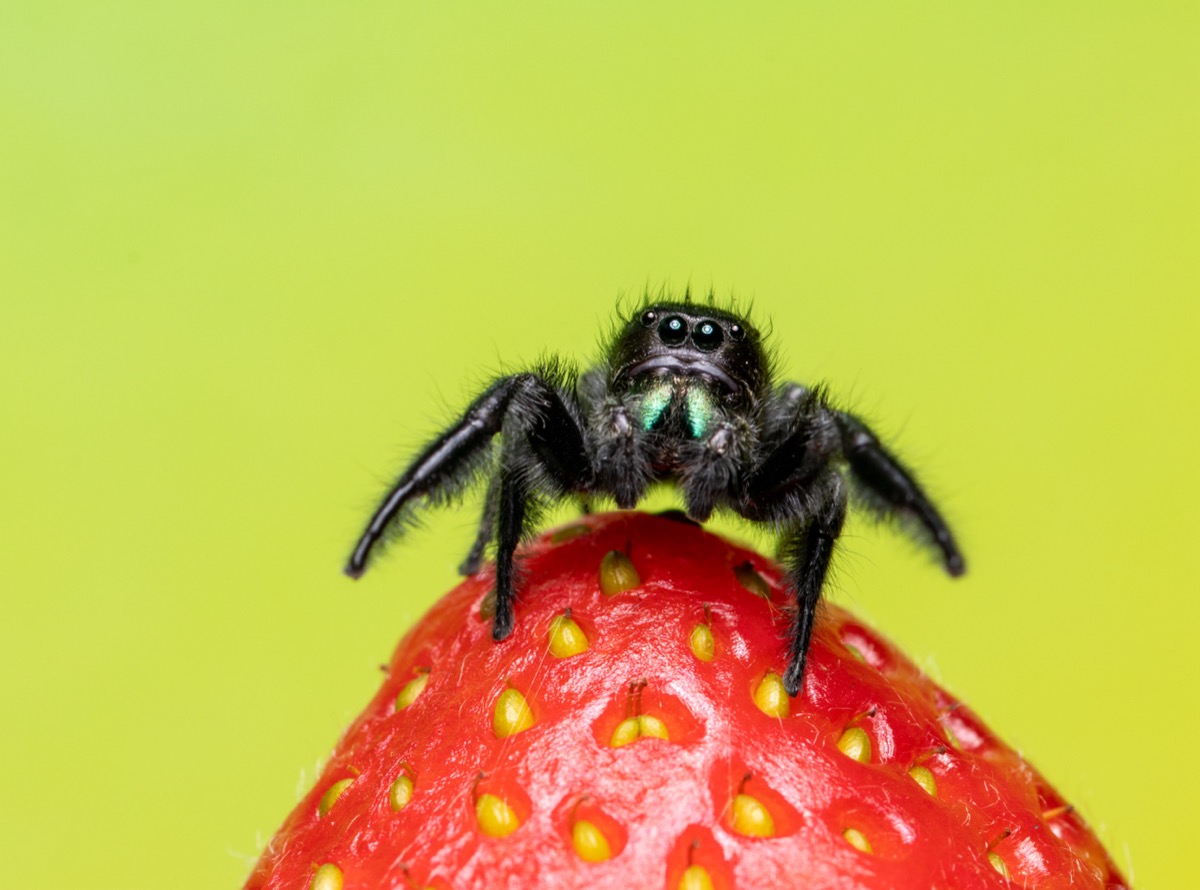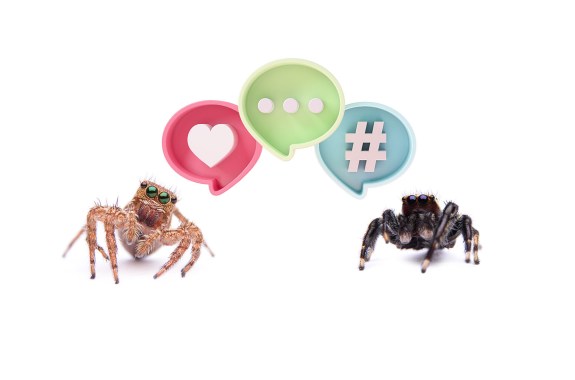Grade Level
All
minutes
15 min - 1 hr
subject
Life Science
stem practices
Analyzing and Interpreting Data
Activity Type:
After School Activity, ciphers, math activity, sound, STEAM
Did you know that spiders can make sounds and send messages to each other? They don’t do it like humans, who have vibrating vocal cords to produce sounds. Instead, jumping spiders are great dancers and use fancy footwork to communicate. Watch the video below. How do you think the spiders are making sounds?
Don’t be surprised if you’ve never heard sounds like that before. Spider sounds are too faint for the human ear to hear, so researchers record them using a laser vibrometer—a scientific instrument that measures surface vibration.
How And Why Do Spiders Send Each Other Messages?
Spiders can’t move the air to make noises like people do with their vocal cords and don’t have ears to hear. Instead, they communicate by sending sound vibrations through the ground. Scientists call this substrate-borne signaling. By tapping parts of their bodies together, male spiders send vibrations down their legs and into the ground. Female spiders feel those vibrations through their sensilla (sensory organs on their legs). But what are they saying?
According to Madeline Girard, an animal behavior specialist at the Elias Lab, the spiders’ messages might contain genetic information. Male spiders may be telling female spiders why mating with them is good for the species.
“They’re not providing parental care, they’re not providing a territory for the females to live, and they are not getting food. The thing it could indicate is the genetic quality of the males.” – Madeline Girard

Communicate Like A Spider Using A Polybius Square
Now, it’s your turn to communicate like a spider using sound vibrations. You will use a Polybius square to create a tap code. A Polybius square is a cipher—a secret code—that allows you to turn the alphabet into a numerical code. By using the coordinates on the square, you can tap out the code for each letter.
Start by learning to find the correct coordinates for each letter. Look at the image below. Can you find the letter H? Using the orange row of numbers at the top, find the number that lines up with the letter H. Then, using the yellow column on the left, find the number that also lines up with the letter H. The coordinates for H are 3,2.

You may notice that, in the grid above, the letters I and J share a square. Why? Because Polybius, the inventor of the square, was Greek, and the Greek alphabet has only 24 letters. Since the English alphabet has 26, you need to double up two of our letters in one box.
Try This!
- Find a partner and print out the Polybius square resource, or draw your own on a piece of paper.
- Practice tapping out the word HELLO by finding the coordinates for each letter on the grid. Hint: 32 51 13 13 43 = HELLO
- Once you get the hang of it, try tapping out secret messages to each other on the floor, wall, desk, or other hard surface.
Hint: Keep an extra piece of scrap paper handy so you can write out your tap codes and decipher your partner’s messages.
Ask yourself these questions:
- If you were in a noisy area, like a cafeteria or on a subway platform, could you use a tap code to communicate?
- What other ways could you use the Polybius square code to send messages to each other besides tapping?
- How might you improve the Polybius square code?
Why Are Scientists Interested In How Spiders Communicate?
Spiders are part of the largest animal group on earth called invertebrates. However, their populations are declining due to habitat loss and pollution. Invertebrates are essential to the ecosystem because they are part of the food web. The Earth relies on small invertebrates to act as pollinators, help with decomposition, feed larger animals, and keep the soil healthy.
Scientists are studying how spiders communicate to understand the effects of noise pollution on their ability to send and receive messages.

Noise pollution, which scientists call anthropogenic noise, makes it hard for animals to survive. It affects their navigation, mating, hunting, and ability to avoid predators. Without a mighty team of invertebrates helping to feed, pollinate, and clean up the Earth, our ecosystem would change a lot.
Now that you know spiders can communicate through vibrations, can you think of any other animals that don’t have vocal cords? These could be other invertebrates or even animals in the ocean. How do you think they communicate with one another?
Want To Learn More?
- Get outside and use the app iNaturalist to help identify spiders and other invertebrates in your area.
- Learn about spider anatomy with these free printable spider-themed coloring pages from the Taylor Lab at the University of Florida.
- Read Spiders of the World: A Natural History by Norman I. Platnick.
- Watch the video “Petunia Peacock’s Pose” from the Linnean Society to learn how jumping spiders compete for mates through dance.
- Listen to “The World According To Sound: How Spiders Shake Things Up For Love.”
Next-Generation Science Standards
This resource works toward the following performance expectations:
- 1-PS4-1 Waves and Their Applications in Technologies for Information Transfer: Plan and conduct investigations to provide evidence that vibrating materials can make sound and that sound can make materials vibrate.
- 4-LS1-2 From Molecules to Organisms: Structures and Processes: Use a model to describe that animals receive different types of information through their senses, process the information in their brain, and respond to the information in different ways.
- 4-PS3-2 Energy: Make observations to provide evidence that energy can be transferred from place to place by sound, light, heat, and electric currents.
- 4-PS4-3 Waves and Their Applications in Technologies for Information Transfer: Generate and compare multiple solutions that use patterns to transfer information.
- MS-PS4-2 Waves and their Applications in Technologies for Information Transfer: Develop and use a model to describe that waves are reflected, absorbed, or transmitted through various materials.
Credits
Lesson by Cybele Tamulonis
Copyediting by Erica Williams
Digital Production by Sandy Roberts
Educator's Toolbox
Meet the Writer
About Cybele Tamulonis
Cybele Tamulonis is a writer, apiarist, and entomology enthusiast.
